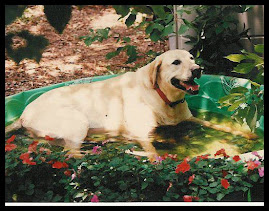Rachel D'Oro/The Associated Press
Published Saturday, March 21, 2009
WASILLA, Alaska - Conditions were fine last Sunday afternoon, as rookie Iditarod musher Lou Packer left a checkpoint halfway through the grueling wilderness race.
What happened next has drawn renewed attention to animal rights advocates' claim that the more than 1,100-mile trek through Alaska is cruel to the dogs who lead competitors' sleds.
One of the few mushers traveling alone at the time, Packer ran smack into a blizzard.
"It's really hard not to start crying," the 55-year-old Wasilla doctor said in an interview Thursday at the urgent care clinic he owns. "I really loved those dogs and I felt like I let them down."
The wind picked up, whipping snow into huge mounds and burying trail markers. Cooking food for his sled dogs was a challenge, but he managed. He also put coats on the animals.
The weather got worse. Snow was waist deep and temperatures plunged to almost 50 below zero. It became almost impossible to move against a wind that Packer described as "a semi tractor-trailer passing you at 80 miles an hour." Still, he kept looking for protection for his team.
Back home, his wife Ellen Varosi monitored his lack of progress through the satellite tracker shown on the Iditarod's Web site. She knew her husband was leading the dogs because the tracker would show his slow speed and then long bouts of inactivity.
"I knew something was critically wrong," Varosi said.
Race officials sent out search parties to look for Packer and two other struggling teams, and a pilot spotted the doctor and his dogs. He was rescued more than a day after he set out - but not before he had lost two of his 15 animals.
One dog, Grasshopper, began to falter. He became lethargic, his eyes rolling back in his head. Packer wrapped the dog in his parka and placed it in the sled.
"He got worse and worse and worse," he said, his eyes shiny with tears. "I just watched him die. It was awful. There was nothing I could do. It was horrible. It was just horrible to watch."
About 20 minutes later, Dizzy started sinking, too, and he died soon after Packer felt ice crystals clinging to the dog's skin beneath the fur.
"I'm just numb," said Packer, who suffered mild frostbite in one eye and spoke as Sky, another dog from his team, sat quietly at his side. He believes his team would have stayed ahead of the worst of the storm had he not spent more than three hours helping a musher who had crashed earlier in the race.
"I can't believe it happened," he said. "Dog deaths are something you hear about and you go, 'Well, that's not ever going to happen to me.' And then I had two."
While Packer tried hard to save his animals, the whole idea of racing sleds through sometimes brutal conditions is offensive to animal rights activists.
Advocates say at least 146 dogs have died in the Iditarod since it began in 1973. Iditarod spokesman Chas St. George said he could not find statistics of the total number of dog deaths, though there have been occasional spikes, such as 1985 when a dozen dogs perished in a blizzard.
Packer's dogs were among five animals that have died in this year's race, with about a dozen teams still on the trail Saturday afternoon. At least one Iditarod dog typically perishes in the race, often from gastric ulcers that develop on the trail. Three dogs died in the 2008 race.
Pulmonary edema was a factor in two deaths this year - neither on Packer's sled. Race officials say the problem likely stemmed from a cardiac abnormality.
In light of the latest deaths, People for the Ethical Treatment of Animals has escalated its annual letter-writing campaign to persuade Iditarod sponsors to withdraw their support. More than 2,700 people have participated in this year's drive, according to spokeswoman Desiree Acholla.
"Racing dogs to their death is indefensible, yet the death toll rises year after year and the race continues with business as usual," she said.
Major sponsors of the Iditarod include Exxon Mobil Corp. and Wells Fargo. Both companies say they support the race.
"Wells Fargo is proud to support the Iditarod - an event that commemorates the rich heritage and resilient spirit of Alaskans," said David Kennedy, an Alaska spokesman for the bank. "Our sponsorship is a strong example of local community involvement that reinforces our reputation for supporting the success of communities where we do business."
Race organizers note an expansive system of checks and balances has evolved over the years to better monitor the more than 1,000 dogs along the trail. Veterinarians are deployed to checkpoints. Mushers must keep a dog-care journal. There are mandatory rest stops and random drug testing of the dogs. Deaths are carefully scrutinized. And this year, all teams were outfitted with satellite tracking devices, which tipped Packer's wife that he had run into trouble.
"We work every year with our mushers, veterinarians and all the people who are part of this race in terms of one single goal, and that's to create the very, very best continuum of care for the four-legged athletes that we consider to be the greatest in the world," St. George said. "It is our responsibility to continue to strive for no deaths in this race."
At least one animal welfare group - the Humane Society of the United States - no longer actively campaigns against the Iditarod, although officials aren't endorsing it either.
They acknowledge, however, the event's significance in commemorating the work of dog teams that were sent on the trail in 1925 to bring diphtheria serum to Nome to combat a deadly outbreak.
"I would like to see the Iditarod celebrate the history and culture of the event and not be just a timed event, but they're trying to make it as safe as they can for both the animals and humans," said Dave Pauli, the humane society's Western region director. "We're definitely reformists and not abolitionists on an event like this."
Packer says he's not done with the Iditarod, despite his ordeal. He believes the extreme conditions were an aberration and his team of dogs were actually in superb condition.
"It's just such an incredible experience to cross the Alaska Range with a dog team, to cross this huge range of mountains," he said. "You go through some incredibly beautiful country."
~~~~~~~~~~
Happy Trails,












.jpg)

.jpg)































1 comment:
I think part of the solution to this problem is musher training.
The mushers should be required and trained to know how to identify a team in distress. This should be the responsibility of the iditarod commission - the mushers would end up paying for this training. They should be required to stop and check all dogs at a prescribed interval, defined by iditarod, confirmed by gps. They should never drive the team in deep snow or wind chill below -30 or so. They should carry a simple to set up, lightweight, shelter to protect the team in extreme conditions. If a dog dies in extreme conditions and the musher didn't set up the shelter to protect the team, the fine would be $100,000. The mushers should be required to provide proof of insurance or a bond instrument covering their potential liability to the iditarod. If a musher is found at fault for a dog's death, the musher is barred from future iditarod runs.
The race can be fixed but, it's in quite a state of disrepair right now.
Post a Comment